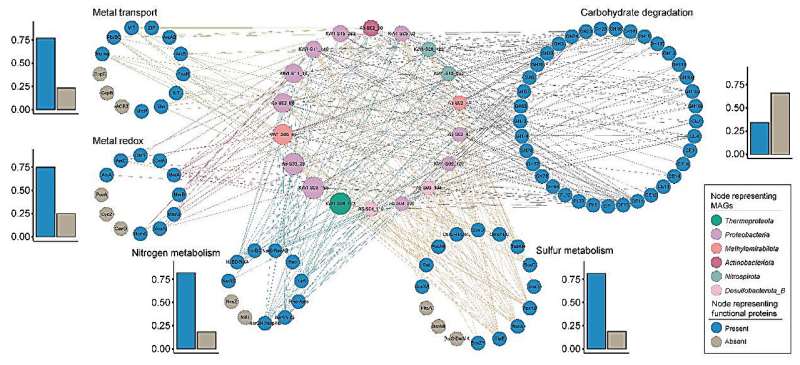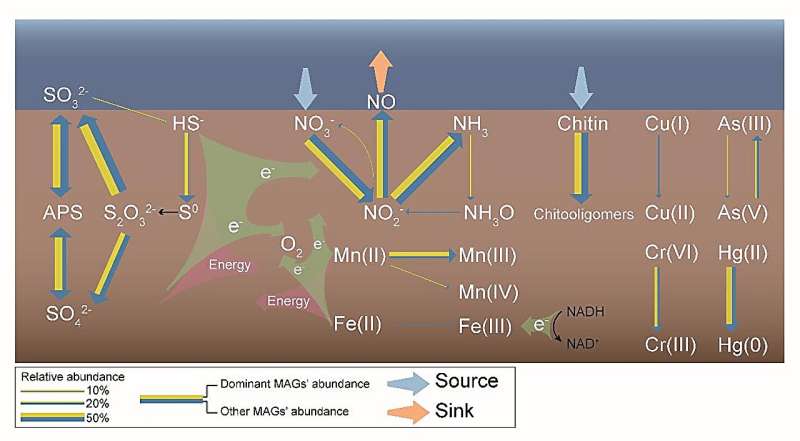Study reveals metabolic capacities of microorganisms in ferromanganese nodule sediments

Ferromanganese nodule-bearing deep-sea sediments harbor unique conditions characterized by high iron concentration and low degradable nutrient levels, which pose challenges to the survival and growth of most microorganisms.
Recently, a research team led by Prof. Sha Zhongli from the Institute of Oceanology of the Chinese Academy of Sciences (IOCAS) has investigated the adaptability of microorganisms inhabiting metal-rich ferromanganese nodule sediments. The study was published in Microbiome on July 25.
The researchers revealed extensive redundancy across taxa for pathways of metal resistance and transformation, the highly diverse mechanisms used by microbes to obtain nutrition, and their participation in various element cycles in these unique environments.
Specifically, within these metal-rich sediment environments, heterotrophic and chemolithoautotrophic microorganisms have developed mechanisms of resistance to heavy metals including metal efflux (Mn, Cu, As, and Pb), adsorption uptake (Fe, Cu, Zn, Pb, and Hg), and metal biotransformation by enzymatic redox (Mn, Fe, Cu, As, Cr, and Hg).

"Utilization of inorganic nutrients by redox reactions (rather than organic nutrient metabolism) is a major adaptive strategy used by microorganisms to support their survival in the ferromanganese nodule sediments," said Assoc. Prof. Zhang Dechao, first author of the study.
"Our work is the first to comprehensively study the metabolic capacities of microorganisms in ferromanganese nodule sediments," said Prof. Sha, corresponding author of the study. "Investigation of core metabolic genes provides the first evidence for the roles of these distinct microbes in metal, nitrogen, and sulfur cycling."
More information: Dechao Zhang et al, Microbe-driven elemental cycling enables microbial adaptation to deep-sea ferromanganese nodule sediment fields, Microbiome (2023).
Journal information: Microbiome
Provided by Chinese Academy of Sciences




















